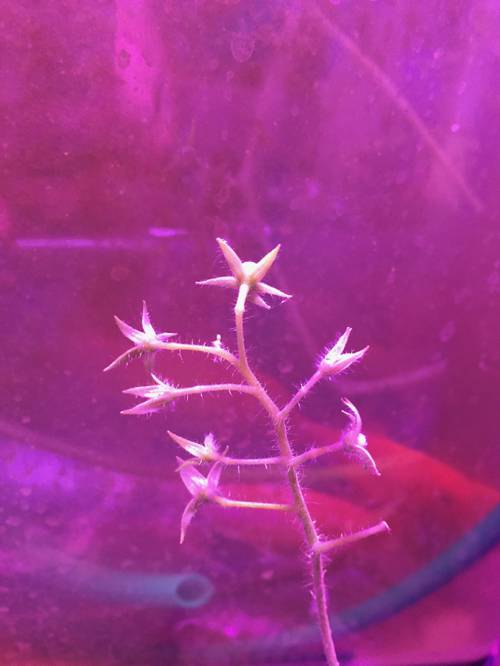
FAQ About Integrating Indoor Plants with Vertical Aquaponics Systems

What is a vertical aquaponics system?
A vertical aquaponics system is an innovative farming method that combines aquaculture (raising fish) and hydroponics (growing plants in a water-based solution) in a vertically stacked setup. This system maximizes space efficiency and promotes a symbiotic relationship where fish waste provides nutrients for plants, and the plants help to clean and recycle the water for fish.

How do indoor plants benefit from a vertical aquaponics system?
Indoor plants benefit from vertical aquaponics systems as they have access to a steady supply of nutrients derived from fish waste, which helps them grow vigorously. The water circulation provides a continuous nutrient supply, reduces the need for soil, and minimizes the risk of pests and soil-borne diseases.

Can I use any type of fish in a vertical aquaponics system?
While many types of fish can be used in aquaponics, it is important to choose species that thrive in recirculating systems and are adaptable to indoor environments. Commonly used fish include tilapia, goldfish, and koi, as they are hardy and tolerate a range of water conditions.

What types of plants can be integrated into vertical aquaponics systems?
A wide variety of plants can thrive in vertical aquaponics systems, including leafy greens like lettuce and spinach, herbs such as basil and mint, and fruiting plants like tomatoes and peppers. Indoor plants that typically require less light and adapt to fluctuating humidity levels are ideal.

How does nutrient cycling work in a vertical aquaponics system?
In a vertical aquaponics system, nutrient cycling begins with fish producing waste in the water. This waste, primarily ammonia, is converted by beneficial bacteria into nitrites and then into nitrates, which plants absorb as essential nutrients. This cycle reduces water waste and allows for sustainable plant and fish growth.

Is it possible to integrate flowering plants in a vertical aquaponics system?
Yes, it's possible to integrate flowering plants in a vertical aquaponics system. Many flowering plants such as marigolds and nasturtiums can benefit from the nutrient-rich water. However, ensure that the plants' light and pH requirements are compatible with both the fish and other plants in the system.

What are the benefits of using vertical space in aquaponics?
Using vertical space in aquaponics offers several benefits, including increased growing area in limited spaces, improved light exposure for all plants, better airflow, and a more organized setup which makes maintenance easier. It’s particularly advantageous for urban dwellers who have limited outdoor space.

How do you manage pests in a vertical aquaponics system indoors?
Pest management in a vertical aquaponics system can be achieved through integrated pest management (IPM) strategies. This includes monitoring plants regularly, introducing beneficial insects, and using organic pesticides when necessary. Maintaining a clean environment and ensuring good airflow can also help prevent pest issues.

What are the initial setup requirements for a vertical aquaponics system indoors?
The initial setup for a vertical aquaponics system indoors includes selecting an appropriate frame or rack for vertical stacking, installing grow beds and fish tanks, and establishing water pumps and pipes for circulation. Additionally, you'll need to set up lighting systems if natural light is insufficient.

Can vertical aquaponics systems be automated?
Yes, many aspects of vertical aquaponics systems can be automated through the use of technology. Automation can include timers for lights and water pumps, sensors for monitoring water quality such as pH and temperature, and automatic feeding systems for fish, which help maintain optimal conditions with minimal manual intervention.

Are there any environmental benefits to using vertical aquaponics systems?
Vertical aquaponics systems offer several environmental benefits, including efficient water use, reduced need for chemical fertilizers and pesticides, and the ability to produce food locally, decreasing transportation emissions. They also enhance urban greening by allowing cultivation in non-traditional places.

Do vertical aquaponics systems require a lot of maintenance?
While vertical aquaponics systems do require regular monitoring, particularly of water quality and plant health, they generally require less maintenance than traditional gardening. Automated systems can further reduce the time needed for daily upkeep, but manual checks are necessary to ensure system balance and health.

What is the role of beneficial bacteria in aquaponics systems?
Beneficial bacteria play a crucial role in aquaponics systems by converting fish waste into nutrients that plants can use. They transform ammonia from fish waste into nitrites and then into nitrates, which plants absorb. This process, known as nitrification, is essential for maintaining a healthy ecosystem in the system.

How can I balance the pH levels in a vertical aquaponics system?
Balancing pH levels in a vertical aquaponics system can be achieved by regularly testing the water and making necessary adjustments. Adding pH buffers like potassium hydroxide or calcium carbonate can help raise pH, while substances such as phosphoric acid can lower it. It's crucial to maintain a pH between 6.8 and 7.2 for optimal plant and fish health.

What lighting conditions are needed for indoor vertical aquaponics systems?
Indoor vertical aquaponics systems typically require supplemental lighting to mimic natural sunlight, especially if located in low-light conditions. LED grow lights are commonly used as they provide the necessary spectrum for photosynthesis and are energy-efficient. The intensity and duration should be adjusted based on the plants' needs.

How do you ensure adequate oxygen supply in a vertical aquaponics system?
Adequate oxygen supply in a vertical aquaponics system is crucial for both fish and plants. This can be achieved through the use of air pumps and diffusers to aerate the water. Proper aeration helps maintain dissolved oxygen levels, which supports healthy fish and beneficial bacteria activity.

What challenges might I face when setting up a vertical aquaponics system indoors?
Setting up a vertical aquaponics system indoors might present challenges such as controlling temperature, managing light levels, ensuring adequate space for infrastructure, and balancing pH and nutrient levels. Additionally, initial costs for setup might be high, and learning how to maintain the balance between fish and plants can be daunting for beginners.

How does water circulation work in a vertical aquaponics system?
Water circulation in a vertical aquaponics system is typically driven by a water pump, which moves water from the fish tank to the grow beds. The plants absorb nutrients from the water, and the water then returns to the fish tank, creating a continuous loop. This circulation ensures nutrient distribution and aeration.

Can vertical aquaponics systems be used for commercial purposes?
Vertical aquaponics systems can be scaled for commercial purposes, offering a sustainable and space-efficient method of farming. These systems allow for high-density plant production in urban environments and reduce logistics costs by producing food closer to the consumer. However, they require careful planning and management to ensure commercial viability.

Is it necessary to heat the water in an indoor aquaponics system?
Heating the water in an indoor aquaponics system may be necessary depending on the fish species being raised and the ambient room temperature. For species like tilapia, maintaining a water temperature of around 22-28°C (72-82°F) is ideal. Heaters and thermostats can be used to maintain appropriate temperatures.
